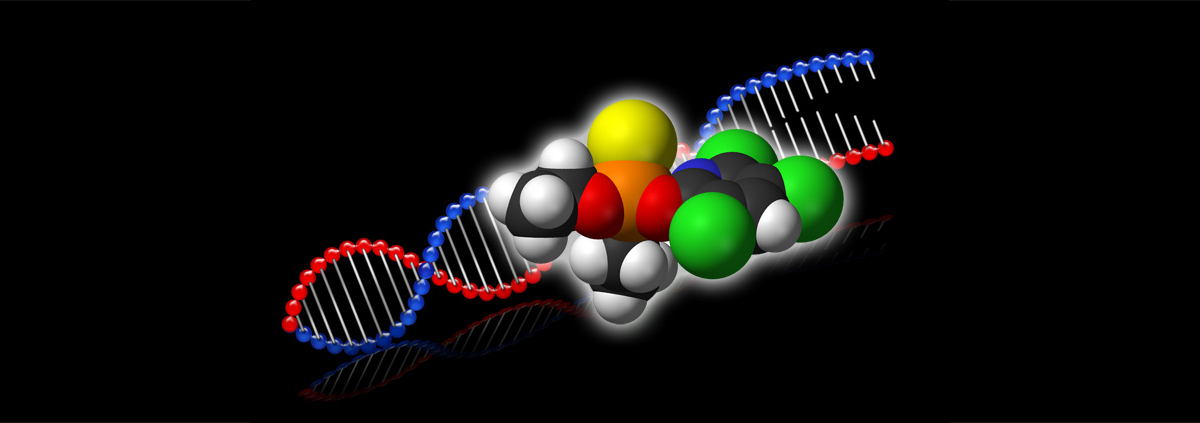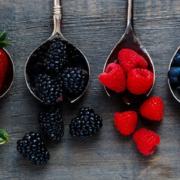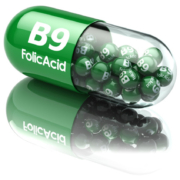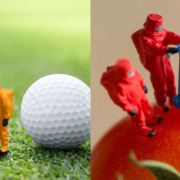The Bottom Line on Chlorpyrifos
Today’s health news is full of controversy, some based on reality but most not. Typically, I would have concluded that the op-ed piece was just that: an opinion that exaggerated the facts to put forth a specific point of view. But before I go further, let me be clear: I’m not in favor of any pesticides if they can possibly be avoided. But we also live with the necessity of feeding billions of people and can’t afford to lose crops; we judge fruits and vegetables by appearance because we no longer know the grower personally. There may be some chemicals that are necessary to get that done. The issue comes down to the question of safety. That’s where all the research I read comes into play.
PON1
When I attempted to find the statistics on chlorpyrifos, I came across a large body of research that examined how organophosphates such as chlorpyrifos were eliminated by the body. The paraoxonase 1 gene (PON1) makes enzymes that help the liver and kidney detoxify chemicals such as chlorpyrifos (1). Research on several groups of subjects show that if exposure doesn’t exceed the detoxification capacity of the body, the current tolerance limits are safe for most people.
The problem is similar to what we find in other genes: there are mutations of the PON1 gene that affect the ability of the gene to produce enough enzymes to detoxify the body effectively (2). If the body isn’t able to detoxify itself, the amounts of chlorpyrifos in the body can exceed safe levels. That means that those with the PON1 mutation may be most at risk for chlorpyrifos exposure.
Or maybe not. Again it comes down to exposure. In a study of farm workers chronically exposed to chlorpyrifos, there was no difference in the gene mutations with the ability to detoxify (3). In another study, blood samples with normal and mutated PON1 genes were exposed to high and low levels of chlorpyrifos; the high levels negatively affected the mutated version of the PON1. The low levels, reflective of typical environmental exposure, showed no negative effect (4).
The issue is one of exposure, whether someone has the PON1 mutation or not. Research shows that mothers and children who live in agricultural areas are more at risk to having higher levels of organophosphates in their systems. What isn’t clear is the impact of genetic mutations that result in health issues.
In a recently published paper, researchers found that infants born to mothers with the PON1 mutation and exposed to environmental organophosphates had smaller head circumferences relative to size (5). Whether that translates to reduced IQ or other neurological conditions remains to be seen.
The Impact of Nutrients on Chlorpyrifos Exposure
Several studies demonstrated potential benefits of nutrients on chlorpyrifos exposure. PON1 is also related to cardiovascular health. In a study of over 400 subjects, those subjects with a mutated version of the PON1 gene and with higher amounts of polyphenols from fruit and vegetable intake did better in measures of cardiovascular risk such as high cholesterol (6).
In another study, subjects who consumed organic honey as a supplement experienced less damage and better DNA repair after chronic exposure to organophosphates (7). The polyphenols in the honey were identified as the primary factor related to the repair process.
Finally, in a study of pregnant women and their offspring, researchers examined the affect of folic acid intake in those women who were and were not exposed to organophosphates (8). Those who had a greater than 800 mcg intake during their first month of pregnancy when exposed to pesticides had fewer children with autism spectrum disorder.
While all of this research is recent, it seems clear that nutrients can have a positive impact on people who are exposed to organophosphates such as chlorpyrifos and other pesticides.
The Bottom Line
When I began the research on one statement in an op-ed piece, I never imagined it would end up here, but you go where the research takes you. While this research trip took us to the USDA, the PON1 gene, and some nutrients that can be protective against exposure to chlorpyrifos, one fact I was unable to find was that we are exposed to excess amounts from the fruits and vegetables we eat. That statement in the op-ed was false. But in that journey, we learned a lot. It’s not where you begin; it’s where you finish.
Four final points:
- I think the ban on chlorpyrifos should be reinstated. Tolerance limits doesn’t mean it’s safe for everyone, and not every harmful impact has been examined.
- Whether the discontinuance is reinstated or not, eat your fruits and vegetables after you wash them carefully. The value of the nutrients for your health exceeds any risk from chemicals that may be present.
- Add some extra insurance by taking your supplements.
- If you’re a golfer, you may want to learn the course’s pesticide schedule and avoid those days.
What are you prepared to do today?
Dr. Chet
References:
1. www.ncbi.nlm.nih.gov/gene/5444.
2. Toxicology. 2013 May 10;307:115-22. doi: 10.1016/j.tox.2012.07.011.
3. Toxicol Appl Pharmacol. 2012;265(3):308-15. doi:10.1016/j.taap.2012.08.031.
4. Toxicol Lett. 2014 Oct 1;230(1):57-61. doi: 10.1016/j.toxlet.2014.07.029.
5. Ann Glob Health. 2016; 82(1): 100–110. doi:10.1016/j.aogh.2016.01.009.
6. J Transl Med. 2016 Jun 23;14(1):186. doi: 10.1186/s12967-016-0941-6.
7. Mol Nutr Food Res. 2016 Oct;60(10):2243-2255.
8. Environ Health Perspect. 2017 Sep 8;125(9):097007. doi: 10.1289/EHP604.









